Click on an image in the invasive species gallery for information.
For more information on how invasive species reach the U.S., the risks they pose, and ways to prevent their damage, click here.
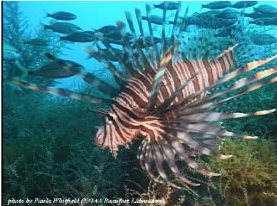
 Red Lionfish (Pterois volitans,Pterois miles)
Red Lionfish (Pterois volitans,Pterois miles) Native to: tropical Pacific
United States distribution: Caribbean Sea, Gulf of Mexico, southeastern Atlantic coast
Pathway: likely aquarium release
Impact: This predatory species has reduced the abundance of important native sport fish in coral reefs, which may lead to reduced fishing and other recreational opportunities.
Photo: Paula Whitfield
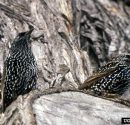
1354061
 European Starling (Sturnus vulgaris)
European Starling (Sturnus vulgaris)Native to: most of Europe, east to central Asia
United States distribution:throughout
Pathway: intentionally imported in 1890
Impact:nests in holes and other cavities, which has adversely impacted native cavity nesters such as sapsuckers
Photo: Lee Carney
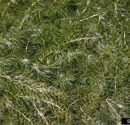
5480636
 Hydrilla (Hydrilla verticillata)
Hydrilla (Hydrilla verticillata) Native to: Indian subcontinent, Korea
United States distribution: widespread in southeastern states through Texas, Arizona, California, Idaho; a second type in eastern states from Georgia to Maine, Ohio, Indiana, Missouri, Minnesota
Pathway: imported into Florida in the 1950s as an aquarium plant and subsequently discarded into nearby water bodies
Impact: displaces native aquatic vegetation, forming dense mats that impede boating and other water-based recreation.
Photo: Leslie J. Mehrhoff
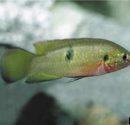
5371465
 African Jewelfish, Jewel Cichlid (Hemichromis letourneuxi)
African Jewelfish, Jewel Cichlid (Hemichromis letourneuxi) Native to: tropical Africa
United States distribution: central and south Florida
Pathway: likely aquarium release
Impact: preys on native fishes seeking refuge in isolated pools during low water periods in the Florida Everglades.
Photo: Florida Fish and Wildlife Conservation Commission
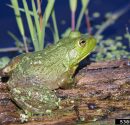
5385944
 American Bullfrog (Lithobates catesbiana)
American Bullfrog (Lithobates catesbiana) Native to: U.S. east of Mississippi River basin
United States distribution: widespread in western states; Montana, Colorado, New Mexico
Pathway: unintentional, stocked along with sport fish; intentional, pest control; aquarium release
Impact: preys on native aquatic species, competes with native frogs
Photo: Russ Otters
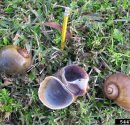
5447264
 Island Applesnail (Pomacea maculata)
Island Applesnail (Pomacea maculata)Native to: South America
United States distribution: portions of Florida, Georgia, North Carolina, Virginia, Arizona, California, Idaho; throughout Hawaii
Pathway: likely aquarium release
Impact: consumes aquascape or agricultural crops
Photo: Leslie J. Mehrhoff
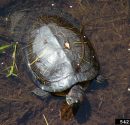
5423689
 Red-eared slider (Trachemys scripta elegans)
Red-eared slider (Trachemys scripta elegans)Native to: midwestern and southern United States, ranging from New Mexico east through western Georgia and northwestern Florida, north through southern Kansas, Missouri, Illinois, southern Ohio and Indiana
United States distribution: parts of eastern seaboard States, throughout peninsular Florida, parts of west coast states Idaho, Nevada, Arizona
Pathway: released or escaped pets
Impact: genetic contamination via interbreeding with other native subspecies, associated with transmission of illness to humans (Salmonella)
Photo: Rebekah D. Wallace
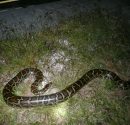
Edward Mercer Burmese python 1-5-11
 Burmese Python (Python molurus bivitattus)
Burmese Python (Python molurus bivitattus)Native to: India, Southeast Asia
United States distribution: extreme south Florida
Pathway: escaped or released pets
Impact: preys on a variety of native species, including the endangered Key Largo woodrat, leading to concerns over long term impacts to native wildlife abundance
Photo: Edward Mercer